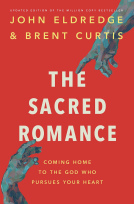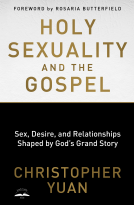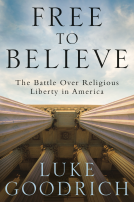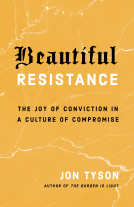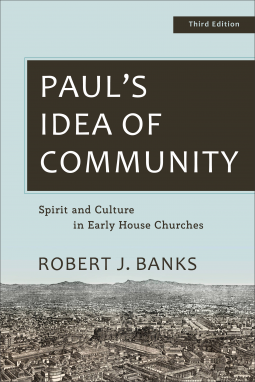
Paul's Idea of Community
Spirit and Culture in Early House Churches
by Robert J. Banks
This title was previously available on NetGalley and is now archived.
Send NetGalley books directly to your Kindle or Kindle app
1
To read on a Kindle or Kindle app, please add kindle@netgalley.com as an approved email address to receive files in your Amazon account. Click here for step-by-step instructions.
2
Also find your Kindle email address within your Amazon account, and enter it here.
Pub Date Jan 21 2020 | Archive Date Jan 31 2020
Baker Academic & Brazos Press | Baker Academic
Talking about this book? Use #PaulsIdeaOfCommunity #NetGalley. More hashtag tips!
Description
Advance Praise
“For years I have required students in a seminary elective I teach to read two books: Paul’s Idea of Community and Going to Church in the First Century—both by Robert Banks. Imagine my delight to find the two works in a single volume and to find it now updated to factor in more than twenty-five years of ensuing Pauline scholarship. When I encountered the first edition of the book decades ago, Paul’s Idea of Community contributed significantly to my own pilgrimage as a scholar. All of us who are indebted to Banks’s seminal work in Christian social history will welcome the third edition of this classic.”—Joe Hellerman, Talbot School of Theology
“Banks’s book was transformational for students and scholars because of his insight into the house churches, the dynamics of community, and the roles of women in the early church. I have personally used this book with students for many years, and their responses have always been positive and enthusiastic. Banks’s writing is even more relevant today because of prevalent restrictive interpretations of Scripture. This contemporary update enhances our understanding of Paul’s letters and sheds light on the principles guiding ministry, equality, and leadership that are so necessary in today’s world. I highly recommend this readable and challenging work for all who wish to increase their understanding of our biblical tradition.”—Helen Doohan, professor emerita, religious studies, Gonzaga University
“A classic just got even better! Robert Banks’s Paul’s Idea of Community has helped many, many people to understand what it was like to be part of Paul’s Christian communities. In this book Banks asks how these communities were similar to other groups in the first-century world—and how and in what ways they were different. This new edition will ensure that Banks’s highly valuable insights into these significant questions continue to help us all to understand the dynamics of Paul’s Christian communities. And having Banks’s wonderful narrative, Going to Church in the First Century, as part of the book is a great bonus too!”—Paul Trebilco, professor of New Testament studies, University of Otago, Dunedin, New Zealand
“As a Korean translator who introduced the previous editions of the book to Korean readers, I am thrilled by this updated fortieth-anniversary edition. I hope it will bring inspiration and joy to readers around the world, including Korea.”—Dongsoo Chang, professor of New Testament, Korea Baptist Theological University/Seminary
Available Editions
| EDITION | Other Format |
| ISBN | 9781540961754 |
| PRICE | $30.00 (USD) |
| PAGES | 240 |
Featured Reviews
 Christian W, Reviewer
Christian W, Reviewer
My review of the third edition of Paul’s Idea of Community: The Early House Churches in Their Cultural Setting.
Goals of the book:
In our post-modern societies, the value of community and togetherness has become more important than we’ve realized. More and more people are becoming isolated and feel more lonely than they did in the previous generation, and more young people are seeking greater degrees of belonging. In light of this, it’s super important that churches step up as places of hospitality toward those who are seeking a place to belong. The kingdom of God is ruled by a Father with arms wide open, waiting to welcome in any to come to him. The early church was a safe haven for those who were outcast and poor, welcoming and fostering a community of believing among anyone who would come to them. Unfortunately, as Robert Banks believes, the Church has lost sight of the original church’s vision for community that Paul expresses in the New Testament.
Even if the church has lost her early vision of community, she still has the New Testament. This is what prompts Robert Banks to write this volume. Banks’s Paul’s Idea of Community: The Early House Churches in their Cultural Setting becomes an important book for churches, pastors, and any who would offer hospitality in the name of Christ. So important, in fact, that this review is looking at the third printing of the title! Readers who have already read this book might still find quite a bit to enjoy with a re-read; the third edition contains updated information based on current scholarship, edits for clarity in certain chapters, with an updated bibliography and an added index.
What does this book offer the church?
The basis of true community, and the church, for Paul, is the gospel itself. Because of that, the book seeks to investigate the way that the gospel influences our communities, our residences, our households, our unity with others, our meals, how we give and exercise gifts, and how we interact with “othered” people such as women and outsiders. A lot of churches consider themselves to be gospel-centered, aiming for the gospel to influence every aspect of their lives. Banks’s book offers us insights into the way that Paul teaches us how the Gospel can work in our lives and affect the way that we live in community with one another. If we can start to see the Church and our community the way that Paul does, through the lens of the Gospel, we can’t help but grow together in unity and love.
Like I alluded to above, this book becomes an important piece that would help pastors, small group leaders, and ministry leaders think biblically about the way that they organize and talk about their communities. One thing that I have noticed lately is that a lot of books call the Church to emulate the practices of the early church, but they look only at the church’s practices rather than their biblical sources. By calling us to look at Paul, Banks offers us a more sustainable way of rethinking community and addressing it as a church.
How successful is this book in reaching its goals?
The book aims to look at Paul’s idea of community. In light of this, certain ideas had to be omitted. Obviously, this means that the book does not focus on the entirety of the New Testament, leaving the work of investigating the Gospels, Johannine corpus, and Catholic Epistles to another author. Some (but few, according to [the author]) will bristle at the separation of the Pauline corpus. [Author] looks broadly at the genuine letters, and includes Ephesians, while relegating the Pastoral Epistles to the back. I would have been disappointed had [author] focused solely on the so-called genuine epistles. Even if Paul didn’t write the entirety of the corpus assinged to him, it would have been important to trace the Pauline school’s idea of community. Thankfully, the Pastorals are included and studied, albeit separately from the rest of the book.
You can read more about the third edition on Baker Publishing Group’s website. You can order it on Amazon, Barnes & Noble, and other websites.
 Conrade Y, Reviewer
Conrade Y, Reviewer
Many people have pretty positive views about the word 'Community.' It is a good way to deflect attention from self toward others. We have all learned the importance to be in it for the greater good. Unfortunately, this word has been overused, even abused. It can also become a cliche for political correctness or to score points with our support base. For many Christians, the word 'community' has become a part of their Church or non-profit names. Lest we diminish the true meaning of community, it is good to come back to the biblical definition and understanding of community. The prime example: The Early Church. This book takes a look at community using references from his epistles to the various churches at that time. The third edition thoroughly revises and updates the material for a new generation. Also include is an article with a catchy title: "Going to Church in the First Century." However, the crux of the book is the same: to highlight the key themes of community from the many epistles of Paul in the New Testament, the apocrypha, Jewish writings, and extra-biblical sources. The main source will remain the New Testament epistles. Although Paul did not proceed step by step to build on his theology of the community, Banks actually did by arranging the book according to themes. He begins with a sociological and religious settings to give readers a context from which Paul's ideas were cultivated. This will give us a better understanding on the origins and nature of community in the first century. The goal of community was not some kind of altruism or harmony, but Christian maturity. This is important because it points us back to Christ. A community that is Christian in the first place must lead us toward Christ. It cannot become an end in itself. A community is visible through its interactions and members' behaviour toward each other. Through meals and signs of fellowship, the body of Christ is a unity of body, mind, and spirit. The acts of baptism, communion, fellowship, the sharing of possessions, gifts, and ministry support of one another allow the gifts of grace to be evident. The gifts of God to the community are there to help members edify the body. They are there to promote unity and diversity at the same time.
There are some chapters on specific issues such as women's role in the community, especially on Paul's prohibitions on women. At least on a relative scale, Christian communities at that time give women more rights than societal norms. Paul also takes time to dissolve any legalistic distinctions that threaten the fabric of unity. That was why he takes pains to tell the communities that neither male nor female; slave or free; Jews or Gentiles; priests or laity; or any distinguishing status in society should ever separate us from the love of God in Christ Jesus. Paul also argues for the abolishing of all kinds of discriminatory practices; in particular, gender, race, and class distinctions. On leadership in the community, Paul teaches leadership by function rather than by position. There are also teachings about how communities ought to welcome visitors, guests, and missioners. Paul makes an important point about a community that needs to look outward more than inward. The chapter on the link between mission and the Church does exactly that. The community of Christ is both local and global; centralized and decentralized. This is a powerful reminder that structures don't define communities. It is the reverse that is true.
While it is true that Paul's emphasis on community is not unique, his epistles reveal one of the most prominent teachings on the meaning and nature of community. On top of that, he anchors his ideas on Scripture, something that modern believers ought to emulate, instead of merely following the world's thoughts and examples. For that matter, Christians as salt and light ought to flavour and show the way on what true community looks like. Going the biblical way is certainly the preferred way. The author treats this rather comprehensively. He looks at the concept of community from the socio-cultural and religious settings, arguing that if we want to understand Paul's ideas, we need to grasp the social and religious contexts at that time. Understanding the three main social and religious groups (voluntary associations, religious groups, and philosophical schools) shine a light on the nature of community. Jews at that time form "brotherhoods" as a reaction against Roman authoritarianism. Greeks, Romans, and philosophers question the relevance of religions and reacted with cynicism. Banks argues that Christian communities are shaped out of these environments. Yet, Paul tries to free the Christian communities from being conformed to such expectations. Instead, they are held to higher standards: Morality without legalism; respectful but not compromise; and bounded but yet free. Freedom for Paul is profoundly independent, dependent, and interdependent.
My Thoughts
First, the Christian community is focused on Christ. In trying to piece together Paul's idea of a Community, it is important to note that the topic of community was never the main thing in his letters. Paul's purpose was for the Church to grow in holiness and Christlikeness. When writing about unity for the community, the focus is on the Head of the Church, which is Christ. The anchor of faith is Christ. The purpose of coming together in love is essentially about honouring Christ. One might even say that a true community is the Christian community because only in Christ can anyone manifest true unity. This is another way of saying that true unity is unity in the truth. This is the core reason for community. Reasons that are anything other than Christ would be considered peripheral reasons.
Second, Paul did not set out to focus on community in the first place. Even though Paul has been systematic and rational in his presentation of the gospel, it does not necessarily mean that community was something that "proceeds logically from one point to another." It takes a lot of study to identify the patterns of community mentioned either directly or indirectly in Paul's writings. Banks help do the heavy-lifting on our behalf to reveal many precious lessons about what community looks like and how we can also pattern our modern communities after them. So, do not glorify the community or Paul's ideas about community because that was not his purpose at all.
Finally, why should anyone read this book? Answer: We need one another to push us toward Christ. We are called to love one another in order that people may know we are disciples of Christ. A community of love will draw people to the Source of this unity and love. As one leafs through each chapter, one would quickly discern the central heartbeat of the book: individuals are members of the body of Christ working and supporting one another toward a purpose larger than themselves. The idea of non-discriminatory practices is not a modern invention. It has been taught in Paul's letters thousands of years ago. The use of gifts is never for self-gratification but for the edification of the community. These and many more will help us pattern our modern communities more effectively.
Robert J. Banks is senior research and development fellow in the Centre for the History of Christian Thought & Experience at Macquarie University, Sydney, Australia. Formerly he served as executive director of the De Pree Leadership Center and was Homer L. Goddard Professor of the Ministry of the Laity, both at Fuller Theological Seminary.
Rating: 4.25 stars of 5.
conrade
This book has been provided courtesy of Baker Academic and NetGalley without requiring a positive review. All opinions offered above are mine unless otherwise stated or implied.
Paul’s Idea of Community: Spirit & Culture in Early House Churches by Robert Banks was a very interesting look at ‘community’ in the first century and serves as a call to the present day church to imitate the biblical model. The goal from this book is to have a Gospel centered focus not only in practice but in finding the source for direction. This does focus on the letters of Paul and not the entire New Testament.
#PaulsIdeaOfCommunity #NetGalley
 Eddie G, Reviewer
Eddie G, Reviewer
Obviously this book is a great work. The updated version attests to that truth.
However this isn't easy reading. It is detailed, comprehensive, and deep. The reader who takes this on needs to be ready for that journey. It reads like it was intended for a seminary classroom. Thus it might make some less committed readers abandon the journey before reaching the final destination.
I am always amazed at those who can do this level of research and writing. The full understanding of Paul's thoughts on any subject require nothing less. It is necessary for those who truly want to understand the nature of the church to attempt to understand Paul's ideas about the institution that he was so vital in creating from an earthly perspective. For those on that journey, I highly recommend this book.
No writer of scripture has contributed more to our understanding of the nature of the church and the practices of Christian community than Paul. Yet we often read into Paul our own culture, resulting in our missing the cultural context in which Paul worked and how his writings addressed early believers in that culture. Robert J. Banks has devoted scholarly attention to this topic since the first edition of this volume in 1994. Now, he offers us an updated version of this work, drawing on the most recent research, reflected in an updated bibliography, and a additional appendix, offering a “narrative exegesis” of Paul in a fictional account of a visit to an early house church gathering.
He sets the early Christian movement in the context of other contemporary religions and emperor worship, as well as the social structures of the Roman world. He then discusses the distinctive character of Paul’s idea of Christian freedom–a freedom lived for others. In companion chapters, Banks describes the work setting in which house churches often existed, in a building with a shopfront where business was done, and gatherings in family quarters either in the back or in an “upper room,” and then the heavenly setting. He considers community in the context of the loving family household, calling attention to Paul’s use of family terminology, and the organic reality inherent in the use of “body” imagery.
The chapter on mutual learning and testing of faith was especially valuable, I thought, because of its focus of the knowledge element of faith. In a time focused on praxis, Banks reminds us how much the language of thinking and knowledge and testing is found in Paul’s writing. He shows how this informs faith, hope, and love, and distinguishes Paul’s use of “knowledge” from that of the mystery cults, stoics, cynics, and Judaism.
He considers the practical expressions of fellowship from baptism, to laying on hands, sharing of possessions and holy kisses, and especially the common meal, bringing people together from across the social classes of the day. He offers a trenchant analysis of Paul’s use of spiritual gift language and the configurations of their usage holding together the tension of grace and order. Diversity extends beyond gifts to gender, race, and class, and Banks shows the radical ways the early Christian movement overcame these distinctions in the practice of equality, albeit allowing for functional diversity. This equality eliminates distinctions between priests and laity, between officials and ordinary members, and between the holy and the common. Leadership is defined instead by function and not position. Banks argues here that the laying on of hands was not an “ordination” imparting a special grace but rather the recognition of congregational discernment in prayer and fellowship.
The last four chapters explore the relationship of “missioners” like Paul and his diverse companions to the church, a body sharing in partnership with that mission. He describes how Paul exercises his authority in relation to the other apostles and through both authoritative teaching and service. It is curious that Banks’ treatment of the Pastorals is relegated to an appendix, representing a deferral to scholarship that classifies these as “disputed.” He leaves the question for the reader to decide, noting both continuities and discontinuities and development from Paul’s thought.
Every chapter has been the subject of numerous books and monographs. What Banks accomplishes is to offer a comprehensive overview with both scholarly depth and the concision valuable for pastoral theologians who want to ground practice in solid biblical and sociocultural studies.
________________________________
Disclosure of Material Connection: I received a complimentary review copy of this book from the publisher via Netgalley. The opinions I have expressed are my own.
Readers who liked this book also liked:
Publishers Lunch
General Fiction (Adult), Nonfiction (Adult), Teens & YA

